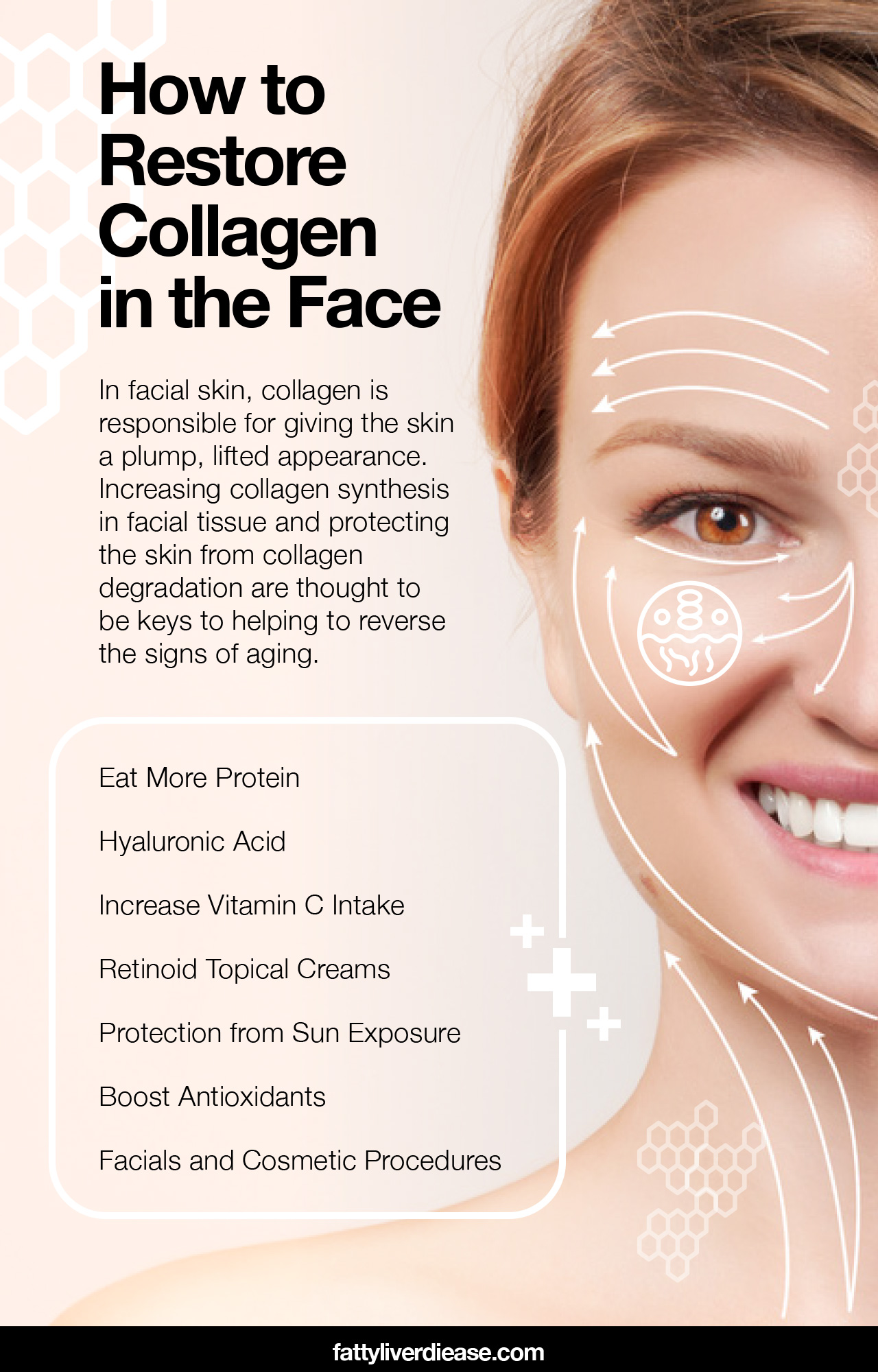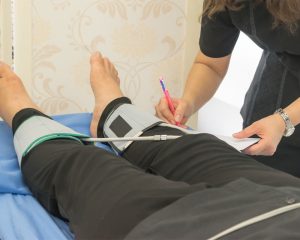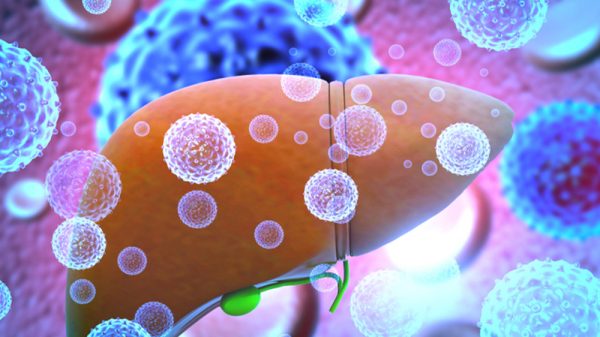Collagen is a protein that is a crucial component in connective tissues, like skin, tendons, and ligaments. In facial skin, collagen is responsible for giving the skin a plump, lifted appearance. Increasing collagen synthesis in facial tissue and protecting the skin from collagen degradation are thought to be keys to helping to reverse the signs of aging.
If you’re looking for how to restore collagen in the face, then you’ve come to the right place. Here we go through the best strategies for boosting collagen in your facial tissue to maintain healthy, youthful skin.
1. Eat More Protein
One of the most effective ways to boost collagen production is by supplying your body with the starting materials to build collagen. Eating lots of dietary protein and getting plenty of essential amino acids supports the production of muscle as well as connective tissues like collagen and elastin. Both collagen and elastin help defy the effects of aging by improving skin elasticity and helping your facial skin have a tightened, full, and wrinkle-free appearance.
Getting complete protein that offers balanced ratios of essential amino acids is important for supporting all protein-based structures in the body. The best sources of complete protein come from high-quality animal products that are also low in saturated fat, such as chicken breast, low-fat yogurt, skim milk, and salmon. The body then uses the amino acids from these protein sources to build collagen peptides.
Directly consuming collagen may also help support the production of collagen in the skin. Collagen is essentially a protein that is present in many animal-based foods, such as bone broth, gelatin, and eggs. Taking collagen supplements is also an option, although it’s not necessary to consume tons of collagen to support collagen synthesis. Instead, focus primarily on eating a protein-rich diet, which will supply all of the building blocks your body needs to produce collagen.
2. Hyaluronic Acid
Hyaluronic acid is a natural component found throughout the body in connective tissues. Hyaluronic acid is helpful for ensuring the synthesized collagen fibers work together properly to support skin structures. It is also a moisturizing agent.
Many over-the-counter skin creams and lotions contain hyaluronic acid as an ingredient. Topically apply a skin cream with hyaluronic acid before bed to help facilitate collagen synthesis and moisturize the skin.
3. Increase Vitamin C Intake
Vitamin C works as a collagen booster because it is directly involved in the collagen synthesis mechanism. In the collagen synthesis process, vitamin C is known as a cofactor, which means that it is critical for facilitating the biological processes.
You can increase your vitamin C intake by eating a variety of fruits and vegetables. Citrus fruits like oranges and lemons are rich in vitamin C, as well as kiwi, red bell peppers, tomatoes, sweet potatoes, and broccoli.
4. Retinoid Topical Creams
Topical retinoid creams are a very effective treatment for acne and wrinkles. Retinoid creams are derivatives of vitamin A that are applied directly to the skin. Research shows that tretinoin may play a role in supporting collagen synthesis in the skin. (1)
Some retinoid creams are available as over-the-counter products, while other more potent creams are only available with a prescription. If you are interested in topical retinoids, talk to your dermatologist about the best options for your needs.
5. Protection from Sun Exposure
All of the collagen-boosting efforts in the world won’t be effective if you don’t also protect your skin from collagen degradation in the dermis layer. The ultraviolet radiation from the sun actually breaks down the collagen that gives our skin a youthful appearance, while increasing the type of fibrous collagen that’s prevalent in scarring. (2)
Plus, if you are using topical retinol creams, side effects cause your facial skin will be drier and more susceptible to sunburns.
To ensure that your facial skin is protected from sun damage, apply sunscreen with an SPF of 30 every morning before leaving your home. Even if it’s winter or it’s cloudy, the sun can be deceivingly strong and cause damage, even if you can’t see it.
6. Antioxidants
Oxidative stress and inflammation can break down connective fibers in skin tissue, leading to less collagen and more wrinkles.
Oxidative stress refers to the buildup of free radicals in cells throughout the body, including skin cells. Free radicals are waste products that react with tissues like collagen and impede normal cellular mechanisms. Antioxidants neutralize free radicals and protect skin tissues from their negative effects.
You can boost the antioxidant content of your diet by eating tons of leafy greens and fresh fruit like kale, spinach, arugula, blackberries, blueberries, and raspberries. Other anti-inflammatory compounds are present in whole grains, nuts, seeds, beans, and oily fish like salmon and mackerel. Drinking green tea and seasoning your food with turmeric can also amp up the antioxidant content of your diet and protect collagen from degradation.
7. Facials and Cosmetic Procedures
Certain facials and cosmetic procedures are known to stimulate collagen protein synthesis in facial skin. Laser skin resurfacing, microdermabrasion, chemical peels, and even botox can all help boost the production of new collagen and prevent sagging. Many facial treatments also help remove dead skin cells and reveal new, healthy skin underneath.
Conclusion: How to Restore Collagen in the Face
The aging process is inevitable, but dull, wrinkled skin doesn’t have to be. Protecting collagen content and supporting collagen synthesis in the face are important components of maintaining healthy skin. Supporting the production of collagen in the face is an anti-aging strategy that can help reduce fine lines and wrinkles while improving the appearance and texture of the skin. A good skincare routine is more than simply applying topical creams. Eating an anti-inflammatory diet rich in protein, protecting your skin from the sun, and applying topical creams can all help ensure that the collagen levels in your skin remain as high as possible.

References:

















